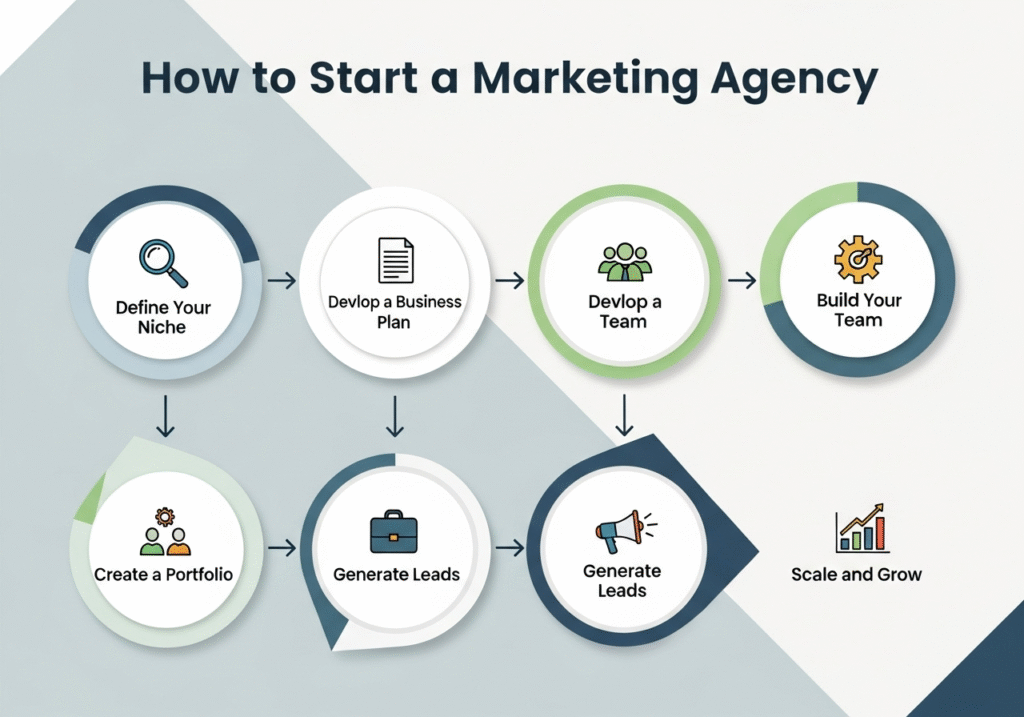Industry:
Education Industry IT Solutions Changing the way you Learn and Administrate. The educational industry is drastically changing in the digital era we are living in today.
With the accelerated pace of technological development, educational institutions have continued to turn to IT solutions as a means to improving teaching and learning processes or administrative practices.
The IT solutions in the education industry are transforming classrooms, administration systems and teachers interaction with students, parents and colleagues.
From simplifying administrative functions to promoting individualized learning, technology is a significant mover for education and schools would benefit significantly from being prepared for the future with the right tech solutions.
In this article, we will delve into the different dimensions of how IT solutions are influencing the education industry and why they are a must for schools, colleges and YES, even universities. We will explore the different categories of IT solutions, what they can do for you and how your environment can be improved.
Role of IT in Education Industry
The education sector, among the most important sectors at the global level, is becoming progressively dependent on information technology for addressing the changing requirements of students and teachers as well as for administrative purposes.
IT solutions include various tools and technologies that improve learning, enhance the educational experience, increase administrative productivity, and provide new venues for education.
Education industry IT solutions can be used for:
Better Learning Experiences: Digital means of learning make it more interactive and personal in nature for the students. Albert Hodes Cupertino How will children learn? Learning management systems, virtual classrooms and e-learning platforms offer flexible 24/7 access to multitudinous resources.
Enhanced Administrative Efficiency: IT-based systems do away with the manual processing of student registration, grades and scheduling. These platforms help schools to run more efficiently, decrease administrative load and provide improved engagement for students and Faculty members.
Collaboration/Communication: Communication among students, teachers and parents has enhanced up to an extent till date because of IT solutions. Tools such as email, messaging applications and online collaboration systems help communication and engagement, thus bridging the gap between classroom learning to home.
Analytics and Reporting: Most of IT solutions are designed to enable educational institutions powerhouse data regarding everything we mentioned above (enrollment, performance, administration). Such information can be employed in decision-making regarding curriculum, student support and resourcing.
IT Solutions in the Education Sector
There are many IT tools that can be used to enhance education. In this post, we will provide some examples of IT solutions for education that can be applied to the most important categories.
Learning Management Systems (LMS)
Digital transformation through the use of learning management system (LMS) are at the heart of most educational organisations. These are platforms that equip teachers to manage and present content, monitor student learning, and foster a do-it-yourself (DIY – or should it be DIT — Do-It-Together) instructional scheme for their students. There are several leading LMS options such as Moodle, Blackboard and Canvas.
LMS services can support a range of educational activities:
Course Creation and Distribution: Teachers are able to create lessons, quizzes, assignments and multimedia content that can be shared with students.
Tracking and Analytics: Teachers or Educators can track student progress, participation and accomplishments with analytics to understand learning gaps.
Collaborative features: LMSs commonly include group projects, discussion forums and peer review tools which allow students to work together and learn from each other.
Online Classrooms and Video Conferencing Solutions
With the advent of remote learning, especially in face of the COVID-19 pandemic, virtual classrooms and video conferencing platforms have gained a shot in the arm within the education sector.
Software programs including Zoom, Google Meet, Microsoft Teams and Cisco WebEx enable teachers to teach live lessons, have discussions with their students and even run classes in real time.
Weapons These are the LMSs that enable schools to keep teaching in a time when everyone should be staying put, providing:
Live interaction: instructors and learners can communicate in person regardless of location.
Share Your Screen and Whiteboard Teacher from Teachers can play slides, draw diagrams or annotate any content- Share your screen with your teacher when needed.
Breakout Rooms Small-group activities or discussions can take place within a larger class, increasing engagement and cooperation.
E-Learning Platforms
Online learning environments are really good when it comes to self-paced learning. Services like Coursera, Udemy and Khan Academy have changed the way students avail themselves of educational material.
Such platforms are providing a variety of courses on various subjects, thus, learning has become inexpensive and easier.
E-learning platforms provide:
Multiple resources: The learning process incorporates recorded video tutorials, quizzes and assignments, and interactions with peers.
Blended Learning: Students can complete some of the work online and customize their schedules while learning (most schools do allow students to accelerate if they are proficient in a subject). Global Learning: students from all over the world can learn new skills and earn certificates.
Student Information Systems (SIS)
It is critical to track students from the time they enroll until the point when they graduate using a Student Information System (SIS). School information systems such as PowerSchool and Infinite Campus enable educational organizations to maintain essential student data, including academic histories, grade reports, attendance records and personal information.
These systems allow:
Centralized Information Center: SIS helps to pull information from various locations to one concise location, allowing administrators, teachers and parents access all the necessary information they need about the student.
Instant: Grades, assignments and attendance can be instantly updated and viewed.
Improved Communication: Through Spark learning parents and instructors can better communicate with each other about a child’s school performance and wellbeing.
Cloud-Based IT Solutions

Cloud computing has drastically modified the education landscape as it offers access to teaching contents and administrative services irrespective of location. Google Drive, Microsoft OneDrive or Dropbox are common cloud storage service options for schools.
Cloud-based IT solutions offer:
Storage and Availability: Schools can secure large amounts of resources storage in the cloud, so that students and school personnel have access to all the relevant information by users regardless of location.
Cloud-based solutions: You can work on documents, presentations and other resource materials in real-time.
Scalability: It’s easier to scale cloud services to meet the increasing demands of educational institutions, without significant on-premise architecture.
Assessment and Testing Tools
Assessment instruments, such as Google Forms, Kahoot and Quizlet, enable instructors to create quizzes, tests and surveys in some minutes or hours at ease. These solutions enable educators to monitor student comprehension, deliver immediate feedback and enhance learning.
These tools provide:
Autograding: You can grade assignments automatically, so that teachers save time.
Interactive Learning: Interactive quizzes and games encourage student participation, while helping to reinforce learning.
Analytics: In-depth performance statistics for students can be used to track trends and strengths/weaknesses.
IT Support Systems
To keep all these technology tools operating efficiently, educators in school rely heavily on IT support systems. These systems there to see that all IT is used and it supports users in case of technical problems.
Essential elements of IT support are:
Support Solutions: Programs like Freshdesk and Zendesk are used to organize and solve technical support issues.
Monitoring Networks: IT support takes responsibility for security and performance of networks as well as all software applications.
Security Solutions: Secure all of your students’ and staff’s personal data with cybersecurity tools that block nefarious efforts.
Advantages of IT Solutions in Education
IT Solutions in Education: The Advantages : The education sector can reap numerous benefits from the adoption of IT solutions, such as follows:
Accessibility and Flexibility
One of the greatest merits of IT solutions is its capability to support remote and online learning which in effect also democratises education for a larger population. Students in rural or underserved places can get the same advanced material as those in cities, narrowing the education gap.
Enhanced Learning Experience
People personalize the learning, information technology makes that personalization possible according to the unique needs of individual students. Personalised learning companies mine data for tailored content and assessments, which could boost that statement of priorities that says children should get the help they require.
Efficiency and Time Savings
AdministrationAutogradeschoolsAutomatedExamSchedulingAutomationGetsITdoneAttendanceIntegration By handling common administrative functions like grading, scheduling, and attendance tracking through IT solutions, teachers and staff have a more efficient use of time.
This is because they can then concentrate on more meaningful activities such as teaching and supporting students.
Improved Collaboration and Communication
The proliferation of tools such as video conferencing, messaging apps and platforms that facilitate collaboration has made communication between students, teachers and parents seamless and fast. Students are able to work together more effectively, facilitating peer editing and online group projects.
Data-Driven Insights
Schools can be more strategic when the data is guiding decisions. Institutional use By capturing and analyzing student performance, what institutions can do to learn from data and where students are in trouble as well as intervene. Institutional performance can be optimized through more efficient resource allocation along with consistent use of data.
Scalability and Growth
IT services help in the easy scaling of schools. In the cloud era, however, scalable computing resources allow those limitations to melt away.
Issues in the Adoption of IT-elements to Education Yet, with all the advantages also comes a number of challenges for educational institutions when adopting IT offerings:
Price: The price to enter IT can be very expensive, particularly for small schools. But the payoff in the end can be greater than resources you used.
Training and support: Teachers and staff need to know how to use new technology. The advantages and potential of IT could fall short if training is not adequate.
Change Resistance: A number of educators and administrators may be unwilling to go with the latest technology, even if they have no experience with it. Addressing this resistance will require leadership and support.
Security Risks: With the increasing storage and sharing of student information online, education providers need to be more focused on security in order to secure sensitive data.
FAQs
Q1: How are IT solutions facilitating enhanced learning?
IT solutions improve the learning process through access to interactive, individualised and interesting content. Tools such as Learning Management Systems (LMSs) permit students to download video lessons, engage in discussion forums, and monitor their ongoing performance.
Q2: What are the best IT solutions in online learning?
The best IT solutions for online learning are virtual classroom tools like Zoom, video conferencing technologies such as Microsoft Teams and e-learning platforms having the likes of Coursera or Udemy. These are the networks by way the of which real time interaction, content sharing and self-paced learning across different learning zones is possible.
Q3 Do IT solutions cost too much for schools?
Though implementing IT solutions requires an initial investment, many lead to long-term gains in efficiency and accessibility. The price of IT services may vary depending on how large your system is and what equipment you might require.
Q4: What’s the need for cloud in education?
Smart and cloud based solutions facilitate the storage of data for schools and learning institutions from any location. Facility of real-time collaboration, scalability and resource acquisition are considered vitals for the contemporary E-education.
Q5: What are some ways colleges and universities can tackle cyber security with IT solutions?
Educational institutions can mitigate concerns of cybersecurity through the implementation of secure platforms, training staff and students in best practices for online security, and adopting cybersecurity solutions like firewalls, encryption, and multi-factor authentication.



